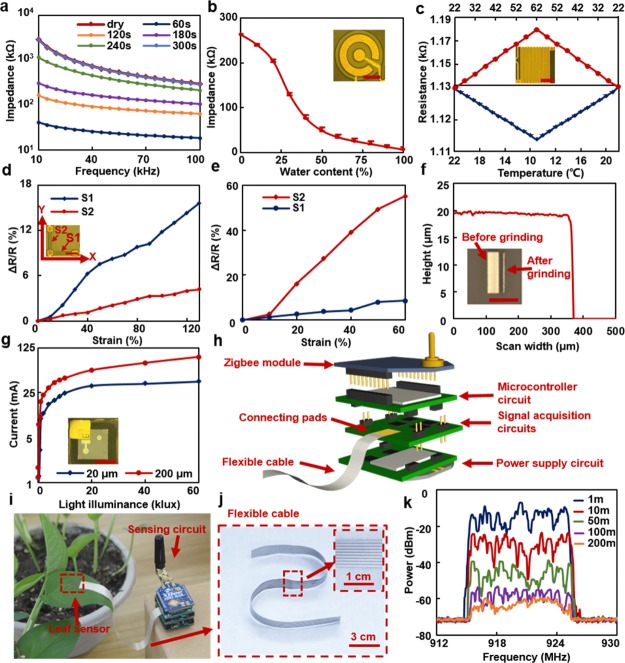Figure 2.
Characterization of individual components and an experimental circuit. (a) Impedance measured by the hydration sensing element between 10 and 100 kHz with varied water contents. (b) Impedance values at 50 kHz with varied water contents. (c) Responses of the temperature sensing element to changing temperature from 9 to 62 °C. A strain sensing component was evaluated by stretching both sensors uniaxially along (d) x- and (e) y-directions. (f) Height and surface profile of the phototransistor measured by a surface profilometer after grinding. (g) Collector-emitter current of the phototransistor with changing light intensity from 0 to 100 klux (scale bars in figures b, c, d, f, and g represent 500 μm). (h) Exploded view of the wireless sensing circuit that consists of stacked printed circuit board (PCB) layers. (i) A sensing circuit is connected to a leaf sensor with (j) screen-printed flexible cable. (k) Signal power transmitted by a Zigbee module received in different distances.

